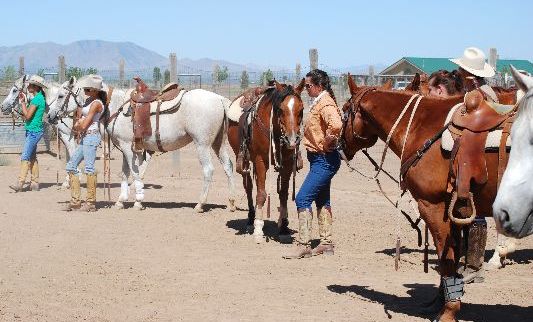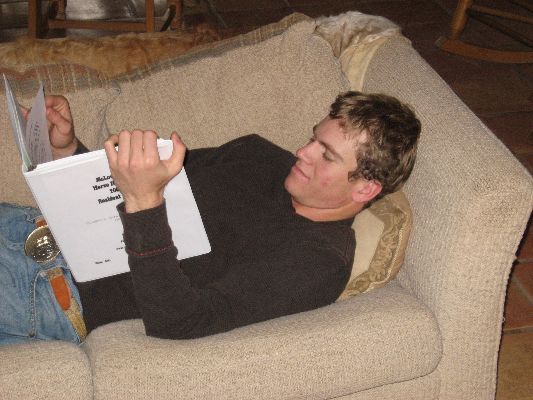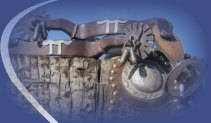|
OUR PURPOSE
"The purpose of the foundation is to train equine instructors and trainers in a humane and efficient way, passing on
the foundation of the Foreman-McLoughlin horse-handling system". Also, to supply scholarships to students when the need dictates. The cost of an equine school, the maintaining of school horses to train students, exceeds what most students can handle. Our plan is to make it as reasonable as possible for long-term students, whenever funds dictate.
The purpose of the school is to prepare individuals to be competent, versatile, honest and progressive professionals in the horse industry. In the fields of training horses and instructing, we teach the amateur and professional, to ride and handle horses better, with minor emphasis on stable management.
We are dedicated to preserving the Foreman/McLoughlin system of humane horse handling, and the
art of classical horsemanship, in the style of the stock horse and rider.
Waiting in line to be worked at school

Since the 1700's a style of riding started to evolve in the United States. The great cattle industry produced a need for a specific horse with specific moves and talent. Although many countries have, and still work cattle today, there are none with the style, precision, attitude and pure grit of the American stock horse and rider. The stock horse is made up of many different breeds and cross breeds of horses, but is primarily dominated by the American Quarter Horse.
As the cattle industry grew in the United States, the cowboys and their horses had to change and learn new skills. When the work got progressively harder, they adapted, and became tougher. Although the horses developed their moves and attitude to handle the daily challenges, the riders had to keep up with the long hours and the hard fast work of the day. There was not alot of time for the rider to learn how to handle the horse to their best advantage. Many riders were naturally talented, however other riders were not, and many different techniques were put into practice. Some of these techniques were good, some questionable, but the horse just hung in there.
In the 1930's and early 40's, a cowboy with a strong passion, love, and a lot of talent with handling horses and cattle, started gathering ideas of how to train horses from the best horse trainers he could find. This cowboy's name was Monte Foreman. He started to organize these techniques of other talented trainers and added some very important thoughts and techniques of his own into a humane training system. Having a touch of genius, he put it all in a school of thought, so it could be taught to others. This marked the beginning of improvement for the classical stock horse of today. Monte Foreman then realized he needed to train instructors how to teach these methods to others; and so was born the Foreman Research and School of Horsemanship. Pat Wyse of Montana was the first certified instructor , and is still teaching and promoting Monte Foreman and Foreman Research. As the foundation of the school was being laid down, Ron McLoughlin was fortunate to be a part of the scene. For twelve years Ron worked with Monte, attempting to understand and imbibe everything that Monte was teaching. This was done using video and other photo types to analyze students and horses. All during this time, Monte and Ron fantasized about the perfect riding school, how it should be developed and designed, how it could be physically laid out, what subjects should be taught, and the types of instruction that should be used. 
Monte Foreman passed away in the late 1980's, and all those visions were put on hold. In the mid 1990's, Ron McLoughlin started working on the 'perfect' school again. Realizing that if it was not done now, and
correctly; all that was developed and researched, all the good horse handling techniques, all the work that many people had put into helping Monte Foreman develop this system, would be lost.
The purpose of the Classical Stock Seat School of Arizona, is to preserve the theories and techniques of Monte Foreman and Ron McLoughlin.
Studying the Rider's Notebook
|


